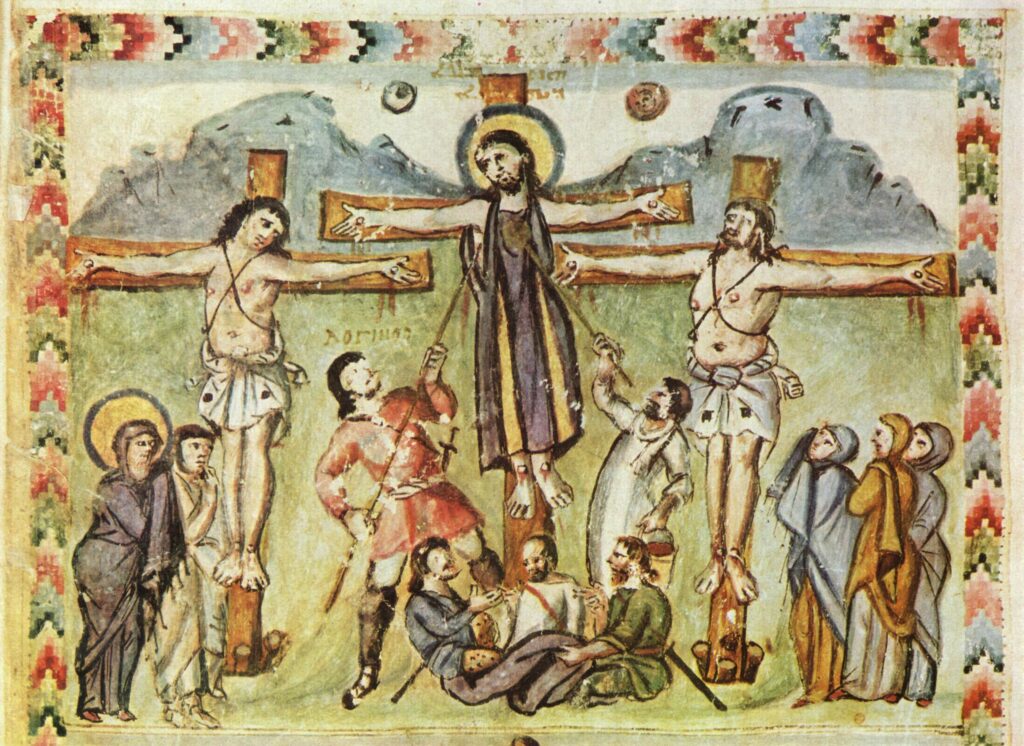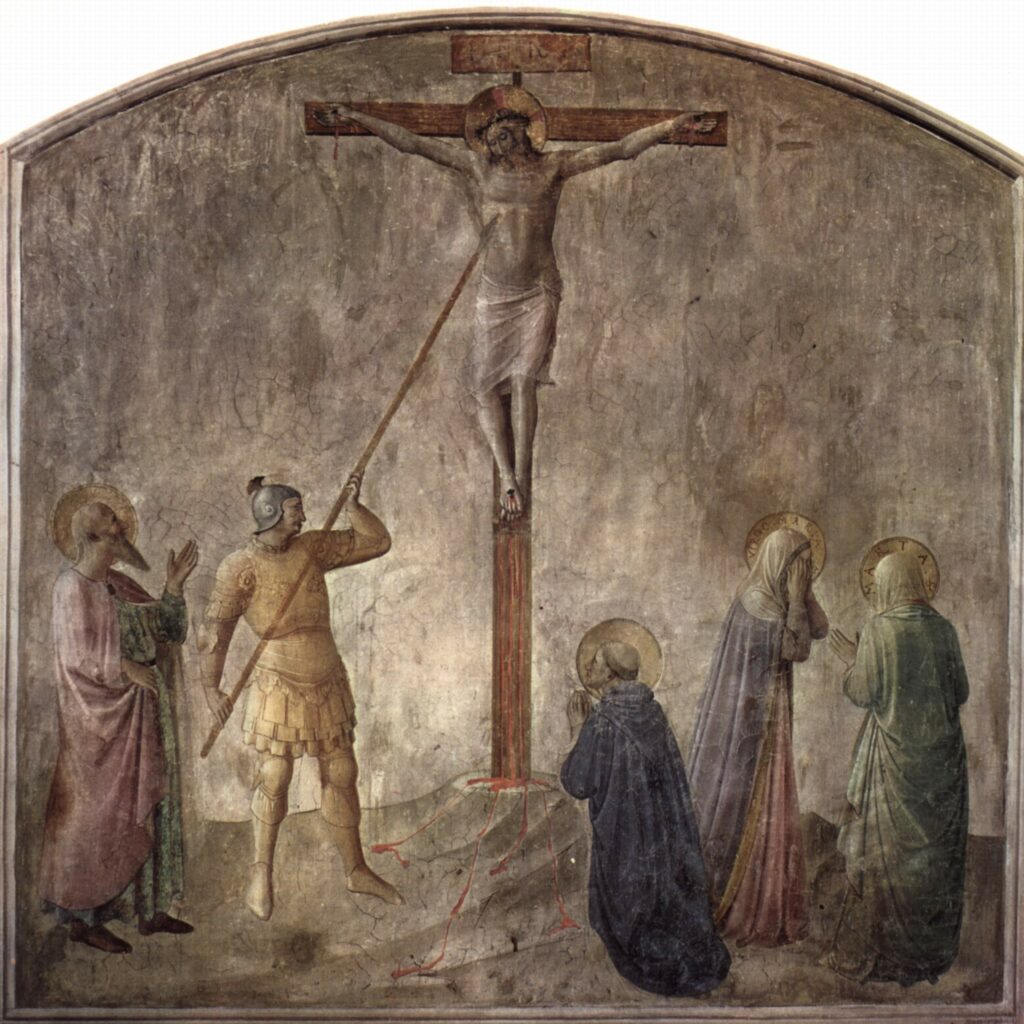Last updated on March 8th, 2023 at 06:14 am
Christianity spans thousands of years, and its history is littered with relics with significant spiritual and cultural significance. These include the bones of saints, clothing, and objects that played a role in critical moments of Biblical history.
In fact, there are several different spears mentioned throughout the Bible. Each one played a role in a moment in Biblical history.
While there is often a great deal of speculation about whether any of these spears survived, one particular spear has brought about a great deal of speculation because of its connection to one of the greatest historical figures, Jesus Christ.
What is the legendary spear made of, and why is it so special? This most famous spear in Biblical history is known as the spear of Longinus. It is considered the spear that pierced the side of Christ as he was crucified.
The spear itself is only mentioned in the Gospel of John. While there is nothing special about the construction of the spear itself, a common spear found throughout the Roman military, its role in Christ’s crucifixion made it famous.
The stabbing was meant to demonstrate that Jesus had already died, thus avoiding having his legs broken. Per Jewish tradition, his body could be taken down and entombed before the Sabbath.
There was some significance to this particular piece of history and its role in the life and death of Christ. Let’s learn more about the spear’s history and why it is still a mystery.

Who was Longinus?
The spear belonged to a Roman soldier named Longinus. He stabbed Christ, showing that he was dead.
This soldier later became a saint in the church canon. But let’s learn more about who he was and how Longinus came to be in such a unique position at a significant historical and religious event.
Longinus was a centurion who served in Judea under the command of Pontius Pilate. As a centurion, Longinus had risen in the ranks and now was in command of a detachment of soldiers.
That detachment was assigned to watch over Golgotha, where Jesus Christ was crucified.
According to certain church traditions, Longinus stabbed Christ in the side and was healed of an eye affliction from the blood and water pouring out of Christ’s wound. It is also believed that Longinus was part of the soldiers who saw Christ’s resurrection, but they refused to be bribed by the Jewish leadership.
Eventually, he left the military and became a Christian. Later, he preached in his native land, known as Cappadocia.
Longinus was credited with spreading Christianity throughout his native land, but that came at a price. Jewish leaders heard about this growth and convinced Pilate to send soldiers to kill him.
The soldiers ended up at Longinus’ home, unaware they were speaking with him. Yet, the soldiers balked when he told them who he was and that they were to carry out their duty. They wanted to let the saints flee, but Longinus and his companions were firm in their intention to suffer for Christ.
The three men were martyred, and Longinus’ head was sent to Pilate. The head was thrown into a trash heap outside the city. Later, miracles were attributed to Saint Longinus, whose head was said to have been buried with the son of a woman who regained sight after finding his head. His spear would have considerable significance based on his unique history with Christ.
Where is the Spear of Longinus?
The spear of Longinus has many different names. It has been called the Spear of Destiny or the Holy Spear. This simple spear is a piece of history, a death with great spiritual and cultural significance for many people worldwide.
With that in mind, let’s learn more about the current history of the spear of Longinus and why there is some question about whether any of the current spears are the actual spear that played a role on that fateful day.
Although it was mentioned only once in the Bible, its importance and spiritual significance grew in the days of the early Church. The appetite for artifacts mentioned in the Bible grew nearly as fast as the spread of Christianity.
While the spear of Longinus was supposedly found and preserved in various great Christian churches, the problem is that at least four current ancient spearheads are claiming the honor of being the spear of Longinus.

Each of them has its competing provenance and considerable gaps in its history. One such gap is the centuries of silence between the crucifixion and the spear of Longinus first appearing.
The main contender for the title of the true spear of Longinus is kept in St. Peter’s Basilica in Rome. It is said that after Persia conquered Jerusalem, the spear was apparently broken into the point and the blade. These two pieces traveled to Constantinople before being offered to Pope Innocent VIII by the Ottoman Sultan.
Other contenders have similar gaps in their history, making it difficult to create a chain of custody that proves without a doubt it is the spear of Longinus. The Vatican does not currently recognize any of these contenders as the true spear of Longinus.
Legends also suggest that the spear may have passed through the hands of many different leaders, including Constantine, Charlemagne, and Otto the Great.
Hitler even took possession of one of the artifacts claiming to be Longinus’s spear, first appearing in 1273. He seemed to focus less on its connection with Christianity and more on the part of the legend based on King Arthur’s legends. He believed that whoever held the spear would have the power to conquer the world.
However, losing it would mean instant death. Many details of Hitler’s interactions with the spear have been called into question, but that spear itself was returned to the Hofmuseum, where it currently remains.
Yet, ultimately, there is no way to confirm that the spear still exists. Still, the legend of the spear continues to have a great spiritual significance for its role in the crucifixion.

